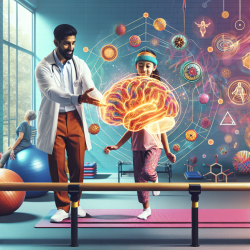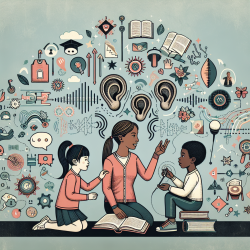Introduction
In the realm of special education, the journey towards cognitive and neural recovery for pediatric brain tumor survivors can be a challenging one. However, recent research has illuminated a promising path forward through structured exercise interventions. The study titled "Repairing the brain with physical exercise: Cortical thickness and brain volume increases in long-term pediatric brain tumor survivors in response to a structured exercise intervention?" offers valuable insights that can inspire practitioners to enhance their therapeutic approaches.
The Power of Exercise in Brain Recovery
The study conducted by Szulc-Lerch et al. (2018) explores the impact of a 12-week structured exercise program on long-term pediatric brain tumor survivors. The findings reveal significant increases in cortical thickness and brain volume, particularly in areas related to motor and somatosensory functions. These changes suggest that exercise can play a crucial role in ameliorating anatomical deficits caused by cranial radiation treatment.
Implementing Research Outcomes
For practitioners in special education and therapy, integrating exercise into rehabilitation programs can be transformative. Here are some practical steps to consider:
- Design Structured Exercise Programs: Develop tailored exercise regimens that focus on aerobic activities, strength training, and coordination exercises. Ensure these programs are supervised by trained professionals to maximize safety and effectiveness.
- Monitor Progress with Imaging: Utilize MRI and other imaging techniques to track changes in brain structure over time. This can provide valuable feedback on the effectiveness of the exercise intervention.
- Collaborate with Multidisciplinary Teams: Work closely with neurologists, physiotherapists, and educators to create a holistic approach to recovery that addresses both cognitive and physical aspects.
- Encourage Family Involvement: Engage families in the exercise process, providing them with resources and support to continue activities at home. Family involvement can enhance motivation and adherence to the program.
Encouraging Further Research
While the study provides compelling evidence of the benefits of exercise, there is still much to explore. Practitioners are encouraged to delve deeper into the following areas:
- Long-term Effects: Investigate the sustainability of exercise-induced brain changes over extended periods and the potential for lifelong benefits.
- Personalized Interventions: Explore how individual differences, such as age, gender, and tumor type, influence the effectiveness of exercise programs.
- Integration with Other Therapies: Examine how exercise can be combined with cognitive therapies to enhance overall recovery outcomes.
Conclusion
The journey towards recovery for pediatric brain tumor survivors is a testament to the resilience of the human spirit. By embracing the power of exercise, practitioners can unlock new pathways to healing and growth. This research serves as a beacon of hope, inspiring us to push the boundaries of what is possible in special education and therapy.
To read the original research paper, please follow this link: Repairing the brain with physical exercise: Cortical thickness and brain volume increases in long-term pediatric brain tumor survivors in response to a structured exercise intervention?










